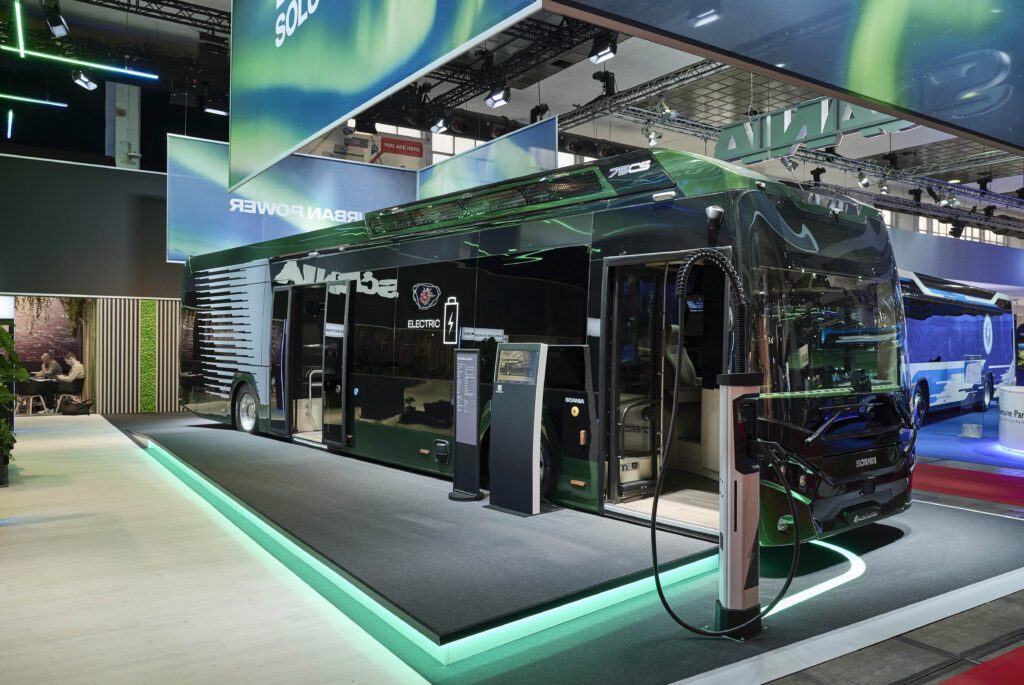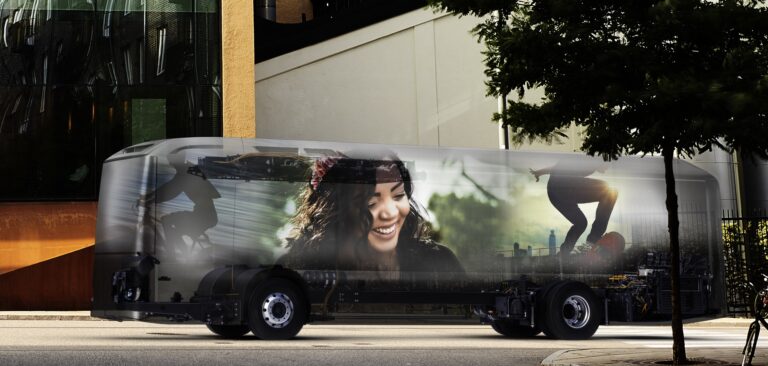Scania used the Busworld exhibition in Brussels, Belgium, to debut its new battery-electric bus platform which it says uses “sustainably sourced and built batteries” that offer energy storage capacity of up to 520kWh.
The initial introduction of the new platform is made available in low-entry 4×2 buses, which will be developed in close collaboration with Scania’s various bodybuilder partners, and it showed one at the expo built by Castrosua. The buses will be available in two performance steps – a four-battery variant with an installed capacity of 416kWh and a five-battery variant with an installed capacity of 520kWh. The company states that, in optimal conditions, this equates to a range of more than 400km for the former, and over 500km for the latter.
“During the development of our new battery electric bus platform, range, performance and battery responsibility have been key areas, all crucial to achieving viable and sustainable transport systems,” said Carl-Johan Lööf, head of product management, people transport solutions, Scania. “Combined with our latest e-mobility services and solutions, this means we will provide complete and highly competitive solutions for urban applications in all our current regions.”
For those in the transportation sector, it is essential to consider the impact of emissions on the environment and the management of the product lifecycle. Scania says it is continuously aligning operations with the vision of sustainable development and focuses on managing the impact on both people and the environment throughout the value chain.
The batteries have been developed and are built in partnership with Northvolt to safeguard quality as well as environmental and social sustainability, both in the production process and supply chain. The new batteries, when combined with an updated battery management system, also enable faster charging times and are combined with a new electric motor. The motor runs at 300kW during peak operation and 250kW in continuous operation and benefits from a newly integrated cooling system and an enhanced control system to meet increased cybersecurity requirements.



